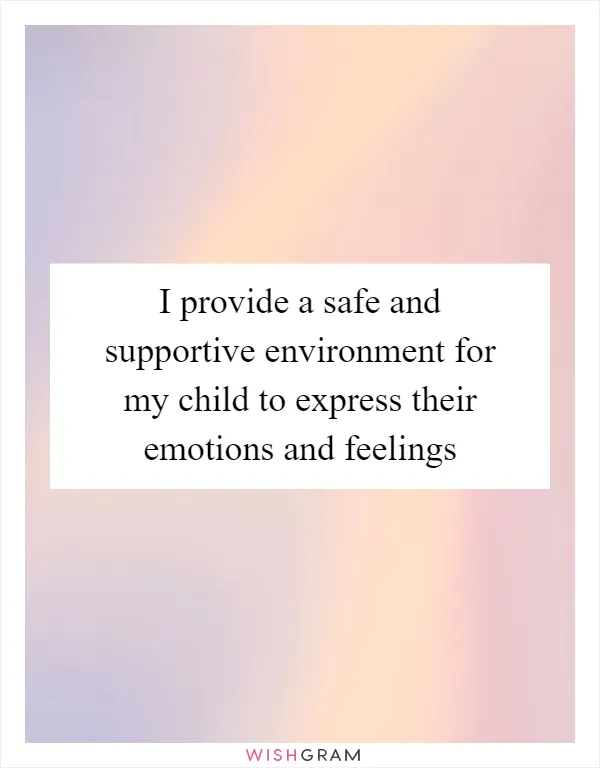I provide a safe and supportive environment for my child to express their emotions and feelings
As a parent, it is important to create a safe and supportive environment for your child to express their emotions and feelings. It can be difficult for children to navigate their emotions, especially if they feel like they are not being heard or understood. By providing a safe space for your child to express themselves, you are helping them develop emotional intelligence and coping skills that will serve them well throughout their lives.
One way to create a safe and supportive environment for your child is to actively listen to them when they are expressing their emotions. This means giving them your full attention, making eye contact, and acknowledging their feelings. It can be tempting to try to fix their problems or offer advice, but sometimes all your child needs is someone to listen and validate their feelings.
Another way to create a safe and supportive environment is to model healthy emotional expression yourself. Children learn by example, so if you are able to express your own emotions in a healthy way, your child is more likely to do the same. This means being honest about your own feelings, taking responsibility for your actions, and showing empathy towards others.
It is also important to create a physical space that feels safe and comforting for your child. This could mean having a designated area where they can go to calm down or relax, or decorating their room in a way that reflects their personality and interests. By creating a space that feels like their own, you are giving your child a sense of ownership and control over their environment.
By affirming to yourself that "you provide a safe and supportive environment for your child to express their emotions and feelings", you are setting an intention to prioritize your child's emotional well-being. This affirmation can serve as a reminder to actively listen, model healthy emotional expression, and create a physical space that feels safe and comforting for your child. By doing so, you are helping your child develop the skills and confidence they need to navigate their emotions and thrive in the world.
